Microscopic Effect on Filamentary Coherent Structure Dynamics in Boundary Layer Plasmas
Abstract
:1. Introduction
2. Methods
3. Results
4. Discussion
5. Conclusions
Acknowledgments
Author Contributions
Conflicts of Interest
References
- Umansky, M.V.; Krasheninnikov, S.I.; LaBombard, B.; Terry, J.L. Comments on particle and energy balance in the edge plasma of Alcator C-Mod. Phys. Plasmas 1998, 5, 3373–3376. [Google Scholar] [CrossRef]
- Krasheninnikov, S.I. On scrape off layer plasma transport. Phys. Lett. A 2001, 283, 368–370. [Google Scholar] [CrossRef]
- Boedo, J.A.; Rudakov, D.; Moyer, R.; Krasheninnikov, S.; Whyte, D.; McKee, G.; Tynan, G.; Schaffer, M.; Stangeby, P.; West, P.; et al. Transport by intermittent convection in the boundary of the DIII-D tokamak. Phys. Plasmas 2001, 8, 4826–4833. [Google Scholar] [CrossRef]
- Antar, G.Y.; Counsell, G.; Yu, Y.; Labombard, B.; Devynck, P. Universality of intermittent convective transport in the scrape-off layer of magnetically confined devices. Phys. Plasmas 2003, 10, 419–428. [Google Scholar] [CrossRef]
- Maqueda, R.J.; Wurden, G.A.; Zweben, S.; Roquemore, L.; Kugel, H.; Johnson, D.; Kaye, S.; Sabbagh, S.; Maingi, R. Edge turbulence measurements in NSTX by gas puff imaging. Rev. Sci. Instrum. 2001, 72, 931–934. [Google Scholar] [CrossRef]
- Boedo, J.A.; Rudakov, D.L.; Moyer, R.A.; McKee, G.R.; Colchin, R.J.; Schaffer, M.J.; Stangeby, P.G.; West, W.P.; Allen, S.L.; Evans, T.E.; et al. Transport by intermittency in the boundary of the DIII-D tokamak. Phys. Plasmas 2003, 10, 1670–1677. [Google Scholar] [CrossRef]
- Liu, H.Q.; Hanada, K.; Nishino, N.; Ogata, R.; Ishiguro, M.; Gao, X.; Zushi, H.; Nakamura, K.; Fujisawa, A.; Idei, H.; et al. Cross-field motion of plasma blob-filaments and related particle flux in an open magnetic field line configuration on QUEST. J. Nucl. Mater. 2013, 438, S513–S517. [Google Scholar] [CrossRef]
- Birkenmeier, G.; Manz, P.; Carralero, D.; Laggner, F.M.; Fuchert, G.; Krieger, K.; Maier, H.; Reimold, F.; Schmid, K.; Dux, R.; et al. Filament transport, warm ions and erosion in ASDEX Upgrade L-modes. Nucl. Fusion 2015, 55, 033018. [Google Scholar] [CrossRef]
- Zweben, S.J.; Myra, J.R.; Davis, W.M.; D’Ippolito, D.A.; Gray, T.K.; Kaye, S.M.; LeBlanc, B.P.; Maqueda, R.J.; Russell, D.A.; Stotler, D.P.; et al. Blob structure and motion in the edge and SOL of NSTX. Plasma Phys. Control. Fusion 2016, 58, 044007. [Google Scholar] [CrossRef]
- Allan, S.Y.; Elmore, S.; Fishpool, G.; Dudson, B.; MAST Team; EUROFusion MST1 Team. Ion temperature measurements of L-mode filaments in MAST by retarding field energy analyser. Plasma Phys. Control. Fusion 2016, 58, 045014. [Google Scholar] [CrossRef]
- Tanaka, H.; Ohno, N.; Tsuji, Y.; Kajita, S.; Masuzaki, S.; Kobayashi, M.; Morisaki, T.; Tsuchiya, H.; Komori, A.; LHD Experimental Group. Enhancement of cross-field transport into the private region of detached-divertor in Large Helical Device. Phys. Plasmas 2010, 17, 102509. [Google Scholar] [CrossRef]
- De la Cal, E.; Semwal, P.; Aguilera, A.M.; van Milligen, B.; de Pablos, J.L.; Khan, Z.; Hidalgo, C. Double imaging with an intensified visible fast camera to visualize the fine structure of turbulent coherent plasma structures (blobs) in TJ-II. Plasma Phys. Control. Fusion 2014, 56, 105003. [Google Scholar] [CrossRef]
- Tanaka, H.; Ohno, N.; Tsuji, Y.; Okazaki, K.; Kajita, S. Statistical Analysis of the Spatial Behavior of Plasma Blobs Around the Plasma Column in a Linear Plasma Device. Contrib. Plasma Phys. 2012, 52, 424–428. [Google Scholar] [CrossRef]
- Krasheninnikov, S.I.; D’Ippolito, D.A.; Myra, J.R. Recent theoretical progress in understanding coherent structures in edge and SOL turbulence. J. Plasma Phys. 2008, 74, 679–717. [Google Scholar] [CrossRef]
- D’Ippolito, D.A.; Myra, J.R.; Zweben, S.J. Convective transport by intermittent blob-filaments: Comparison of theory and experiment. Phys. Plasmas 2011, 18, 060501. [Google Scholar] [CrossRef]
- Ryutova, M. Physics of Magnetic Flux Tubes; Springer: Berlin/Heidelberg, Germany, 2015; ISBN 978-3-662-45242-4. [Google Scholar]
- Ishiguro, S.; Hasegawa, H. Three-dimensional particle-in-cell simulation of scrape-off-layer plasmas. J. Plasma Phys. 2006, 72, 1233–1237. [Google Scholar] [CrossRef]
- Hasegawa, H.; Ishiguro, S. Particle Simulation of Plasma Blob Dynamics: Preliminary Results. Plasma Fusion Res. 2012, 7, 2401060. [Google Scholar] [CrossRef]
- Hasegawa, H.; Ishiguro, S. Study of self-consistent particle flows in a plasma blob with particle-in-cell simulations. Phys. Plasmas 2015, 22, 102113. [Google Scholar] [CrossRef]
- Hasegawa, H.; Ishiguro, S. Impurity transport caused by blob and hole propagations. Nucl. Fusion 2017, 57, 116008. [Google Scholar] [CrossRef]
- Hasegawa, H.; Ishiguro, S. Development and Verification of the Three-dimensional Electrostatic Particle Simulation Code for the Study of Blob and Hole Propagation Dynamics. Plasma Fusion Res. 2017, 12, 1401044. [Google Scholar] [CrossRef]
- Pianpanit, T.; Ishiguro, S.; Hasegawa, H. Observation of the Strong Temperature Gradient in Detached Plasma by PIC Simulation with Monte Carlo Collision. Plasma Fusion Res. 2016, 11, 2403040. [Google Scholar] [CrossRef]
- Bian, N.; Benkadda, S.; Paulsen, J.V.; Garcia, O.E. Blobs and front propagation in the scrape-off layer of magnetic confinement devices. Phys. Plasmas 2003, 10, 671–676. [Google Scholar] [CrossRef]
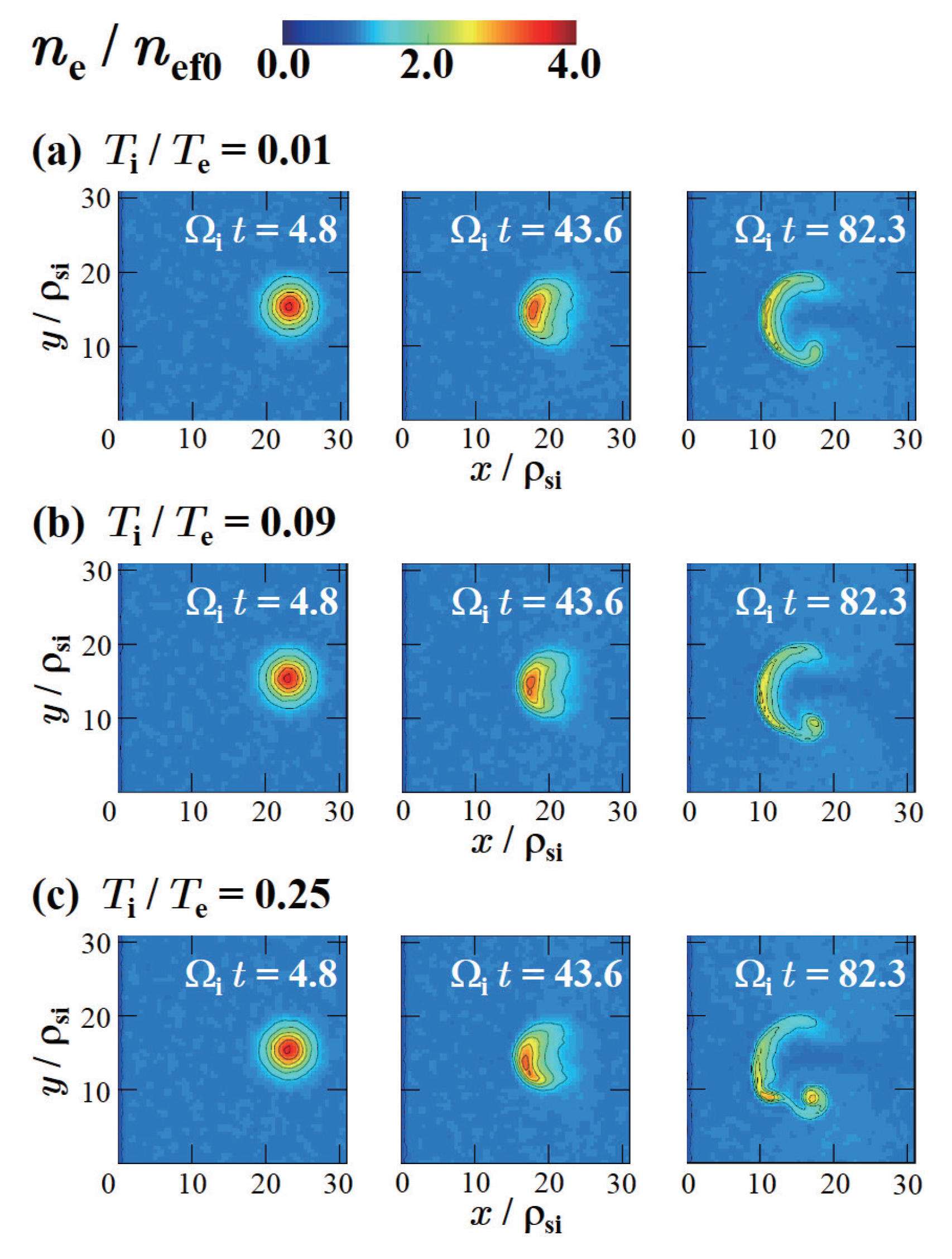
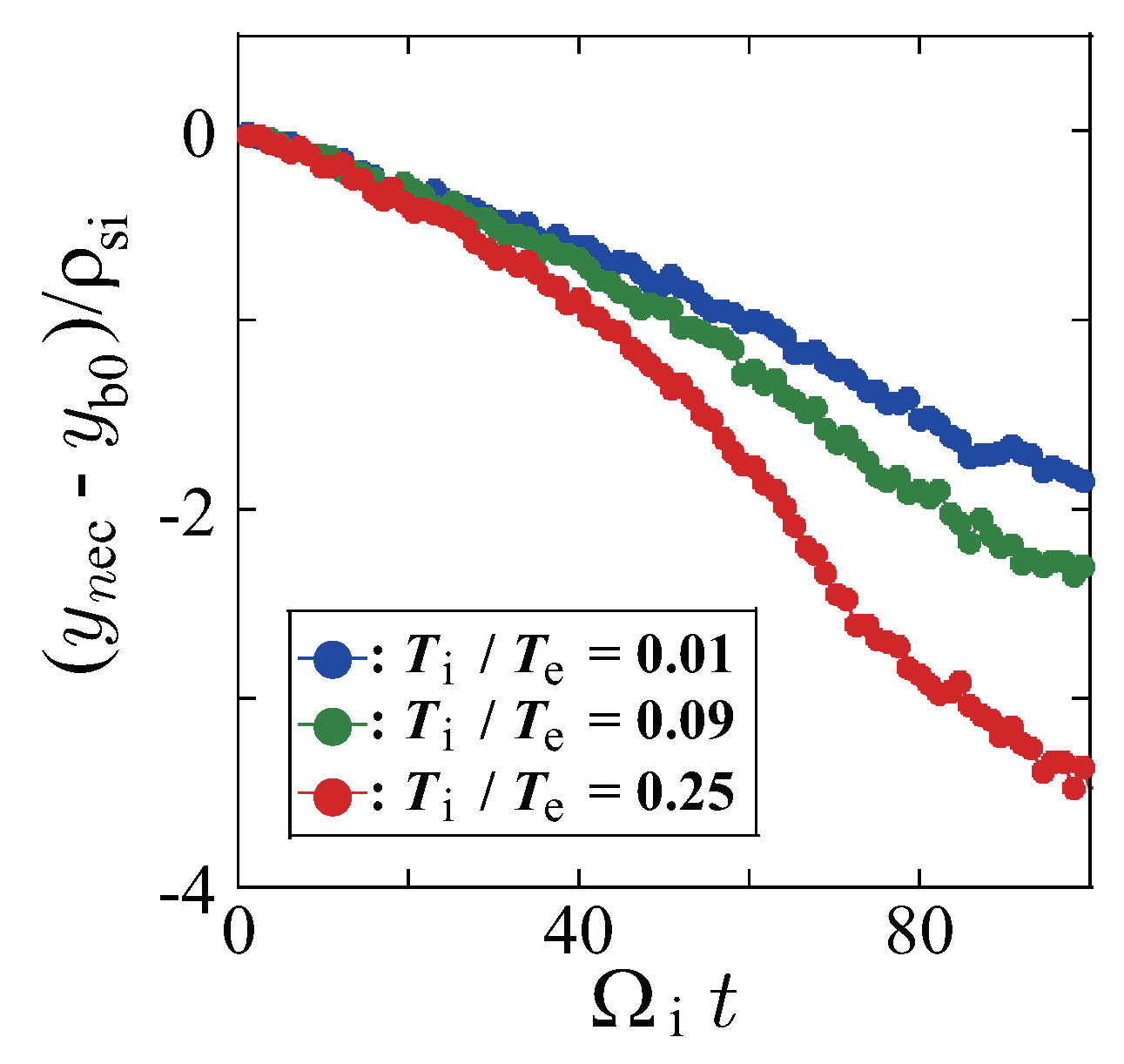
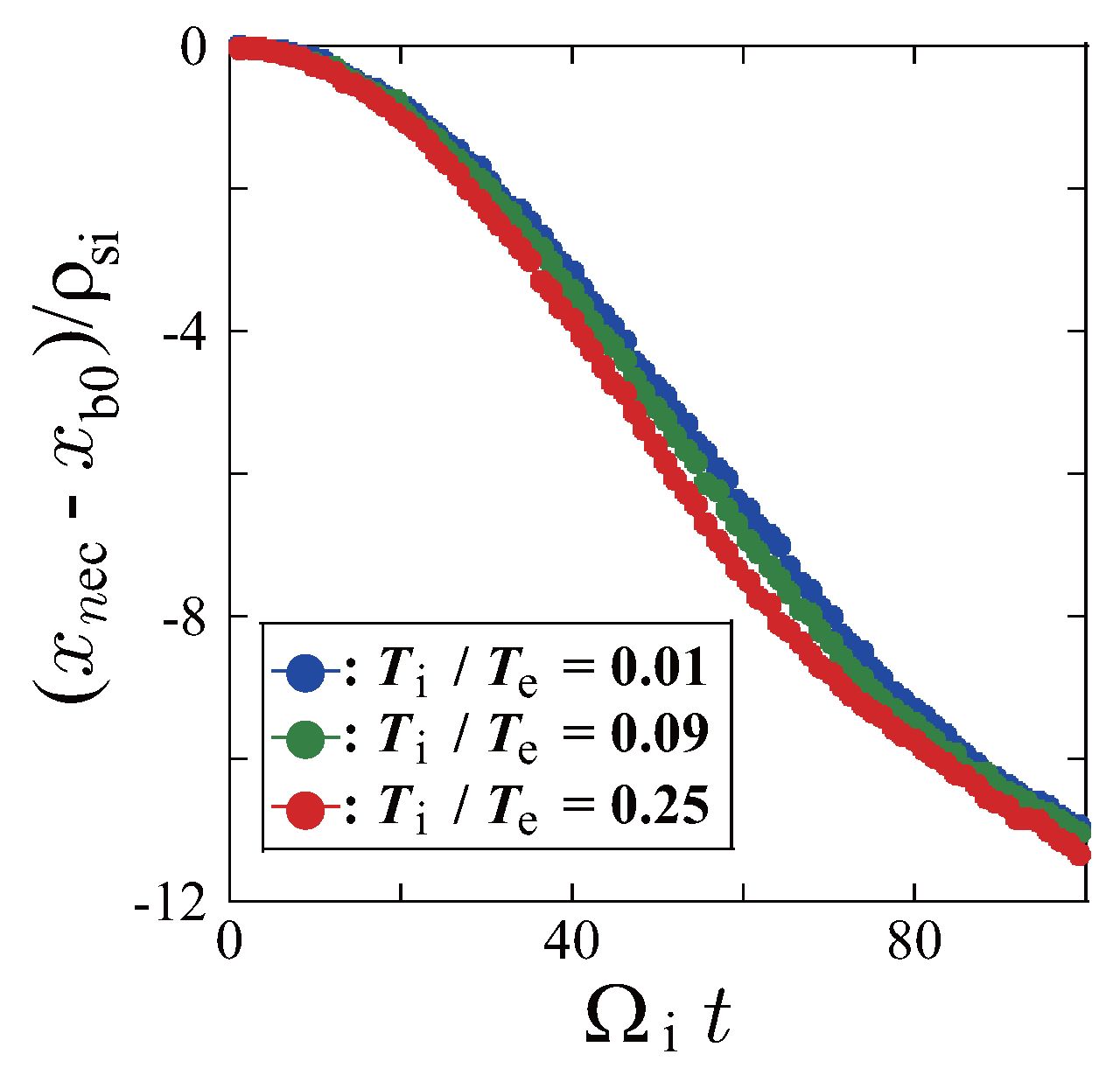
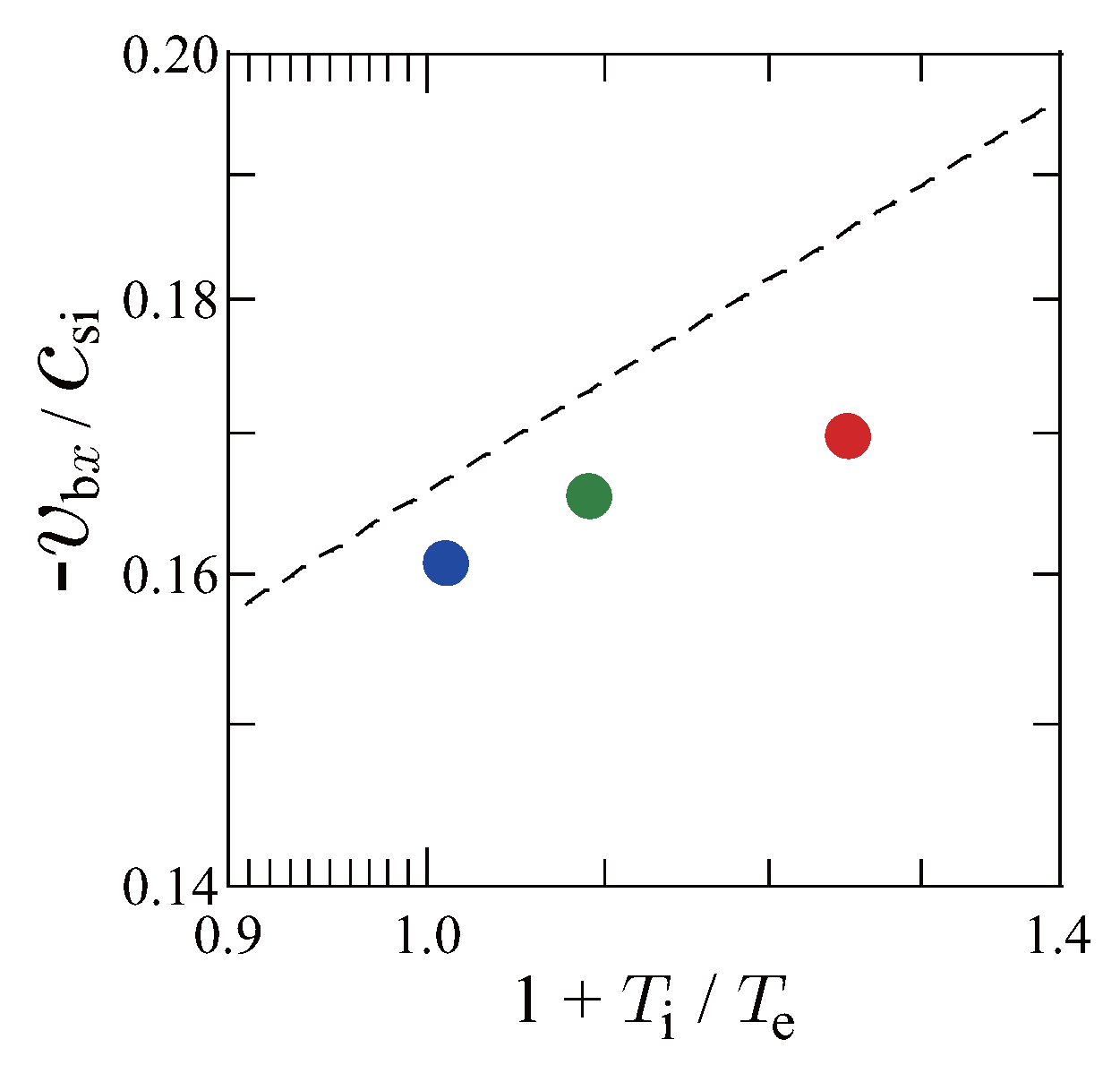
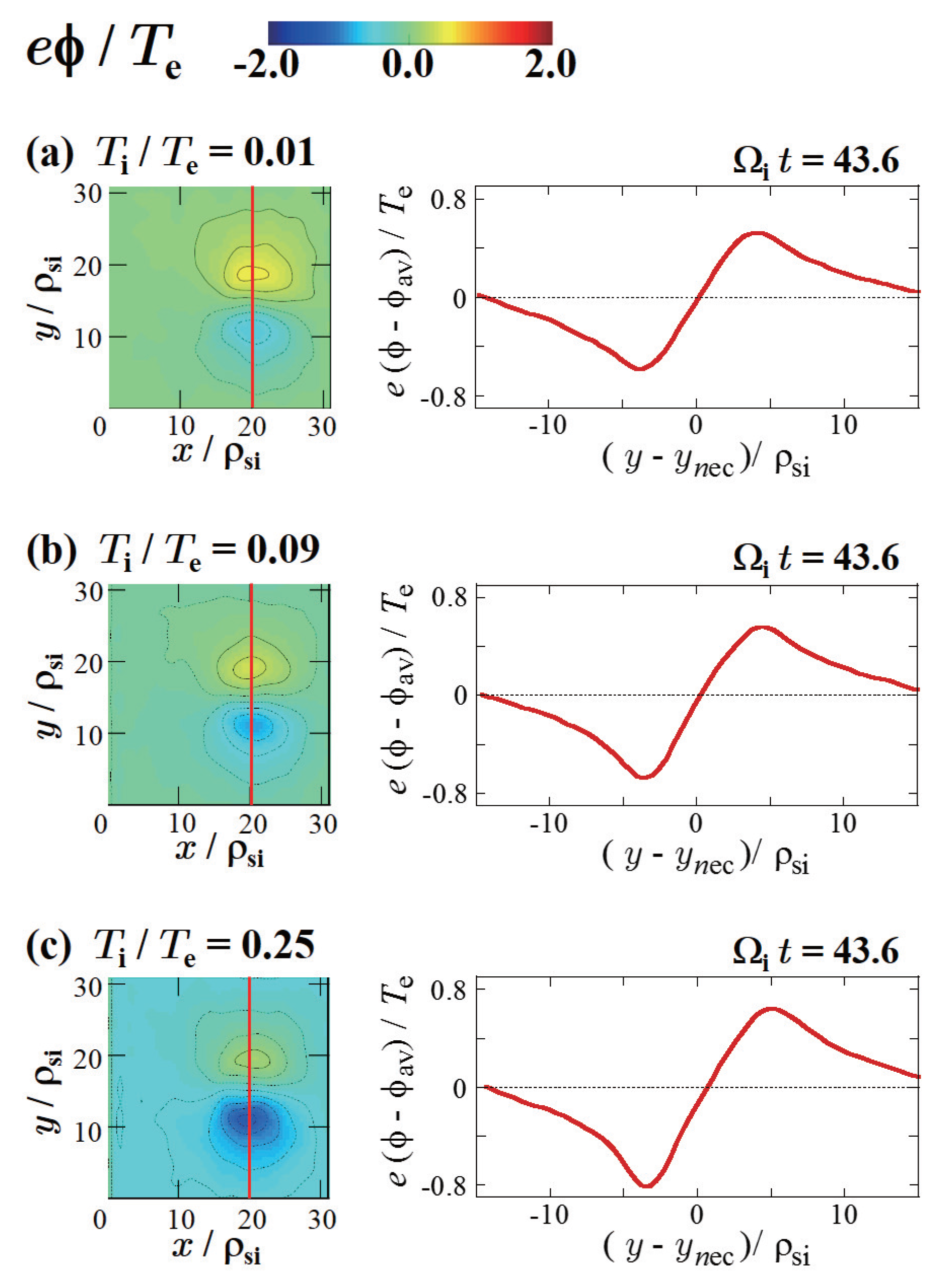
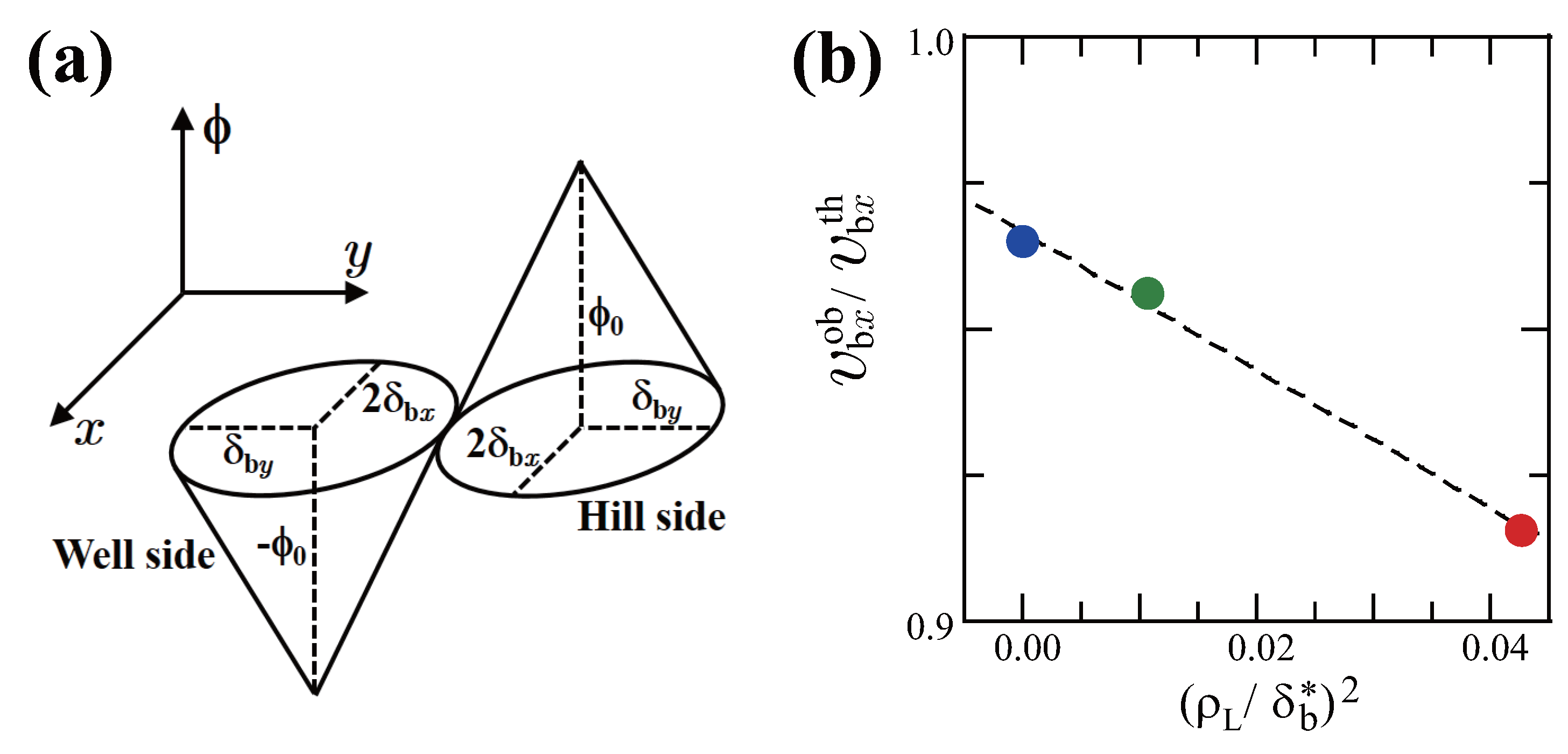
© 2018 by the authors. Licensee MDPI, Basel, Switzerland. This article is an open access article distributed under the terms and conditions of the Creative Commons Attribution (CC BY) license (http://creativecommons.org/licenses/by/4.0/).
Share and Cite
Hasegawa, H.; Ishiguro, S. Microscopic Effect on Filamentary Coherent Structure Dynamics in Boundary Layer Plasmas. Plasma 2018, 1, 61-67. https://doi.org/10.3390/plasma1010006
Hasegawa H, Ishiguro S. Microscopic Effect on Filamentary Coherent Structure Dynamics in Boundary Layer Plasmas. Plasma. 2018; 1(1):61-67. https://doi.org/10.3390/plasma1010006
Chicago/Turabian StyleHasegawa, Hiroki, and Seiji Ishiguro. 2018. "Microscopic Effect on Filamentary Coherent Structure Dynamics in Boundary Layer Plasmas" Plasma 1, no. 1: 61-67. https://doi.org/10.3390/plasma1010006




